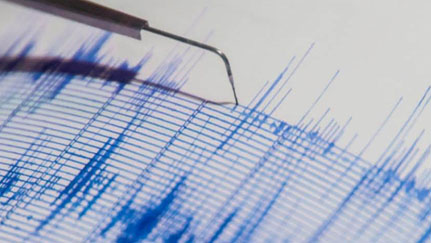Are you ready for the next big one?

Nationwide Private Client recommends that homeowners who live in any seismically active area make preparations to reduce the potential for earthquake damage to their home and possessions.
These safety tips will help you prepare for the next big earthquake:
Before an Earthquake
- Add anchor bolts or steel plates between your home and foundation.
- Brace your home’s cripple wall (the short, wood-stud wall between the top of the foundation wall and the first floor) with sheathing.
- Add moment resisting frames in homes with soft stories.
- Brace unreinforced chimneys, masonry, concrete walls and foundations.
- Install an automatic seismic gas shut off valve on your gas meter.
- Strap the water heater to the structure of the house.
- Keep an emergency supply kit, stored in a waterproof container, in an easily accessible area of your home.
This list is not an exhaustive list of retrofitting options to consider; however, these items provide a starting point for discussions with a qualified contractor. Be sure to consult with the appropriate professionals as you plan any seismic improvements. Our Risk Solutions professionals provide home surveys for eligible new Private Client policyholders. This includes an assessment your home’s foundation to verify it meets current earthquake building codes if you live in an earthquake prone area
During an Earthquake
- Your safety depends on staying calm and reacting quickly.
- If you're indoors, stay there. Move away from windows, skylights, doors and objects that could fall.
- Get under a sturdy piece of furniture, like a heavy table or solid desk. Cover your head and stay there until the shaking stops. People who use wheelchairs or other mobility devices should lock their wheels and remain seated until the shaking stops.
- Don't use elevators until they have been inspected by a licensed technician.
- Be aware that sprinkler systems or fire alarms may turn on.
- If you're outside, move quickly and safely into the open –away from electrical lines, trees and buildings. Drop to the ground and wait for the shaking to stop.
- If you're driving, slowly pull away from traffic to the side of the road and stop. Don't stop on or under bridges, under power lines or near roadway signs that might fall. Once the shaking has stopped, drive carefully and look for debris in the road. Don’t drive on any roads or bridges that show signs of structural damage.
After an Earthquake
- You may still be in danger once the shaking stops. In the aftermath of an earthquake, there can be building collapses, landslides, floods and fire.
- Be prepared for aftershocks.
- Move around the house only if you see that it is structurally sound. Otherwise, quickly and carefully move your family and pets outside to safety. Go to an open space away from damaged areas.
- Check for gas or water leaks and electrical shorts. Don’t turn utilities back on until they have been inspected by a professional. We recommend you have automatic water and seismic gas shut-off valves installed in your home to help prevent water and gas leaks from occurring.
- When it is safe, monitor local news reports via battery operated radio, TV, social media, and cell phone text alerts for emergency information and instructions. Listen to local officials.
- When it’s safe, assess and document damage to your home and personal property before contacting your insurance company or agent.
Additional Resources*
-
FEMA – includes additional earthquake safety tips
We offer this information to assist you in making decisions that can help mitigate your risk. While we cannot address every possible scenario or guarantee these tips will work for you, our goal is to support your efforts to protect yourself and your family. For more information, please visit nationwide.com/privateclient or contact your Nationwide Private Client agent.